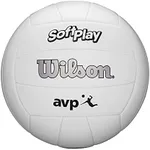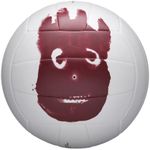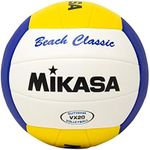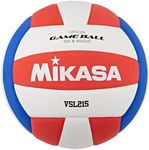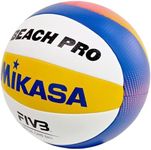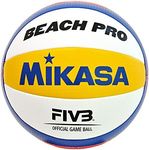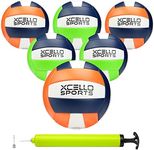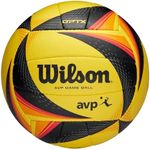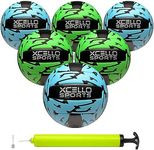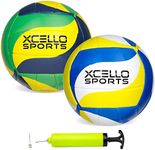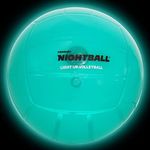Buying Guide for the Best Beach Volleyballs
Choosing the right beach volleyball can significantly enhance your playing experience. Whether you're a beginner or a seasoned player, understanding the key specifications of a beach volleyball will help you make an informed decision. Here are the main factors to consider when selecting a beach volleyball.MaterialThe material of a beach volleyball is crucial as it affects the ball's durability, feel, and performance. Beach volleyballs are typically made from synthetic leather or composite materials. Synthetic leather is more durable and resistant to water and sand, making it ideal for outdoor play. Composite materials can offer a softer touch and better grip. If you play frequently and in various weather conditions, opt for a synthetic leather ball. For casual play, a composite material ball might be more comfortable.
Size and WeightBeach volleyballs are generally standardized in size and weight, but slight variations can exist. The official size for beach volleyballs is around 66-68 cm in circumference, and they weigh between 260-280 grams. A ball that is too heavy can be difficult to control, while a ball that is too light may not perform well in windy conditions. For competitive play, stick to the official size and weight. For recreational play, you might prefer a slightly lighter ball for easier handling.
Panel DesignThe panel design of a beach volleyball refers to the number and arrangement of the panels that make up the ball. Most beach volleyballs have 18 panels, but some may have fewer or more. The panel design can affect the ball's aerodynamics and how it feels when hit. Balls with fewer panels tend to be more aerodynamic and can travel faster, while those with more panels may offer better control. If you prioritize speed and power, choose a ball with fewer panels. For better control and precision, opt for a ball with more panels.
Bladder TypeThe bladder is the inner part of the volleyball that holds the air. Bladders are typically made from latex or butyl. Latex bladders provide a softer feel and better responsiveness, but they may require more frequent inflation. Butyl bladders are more durable and retain air longer, making them low-maintenance. If you prefer a ball with a softer touch and don't mind inflating it more often, go for a latex bladder. For a more durable and low-maintenance option, choose a butyl bladder.
Water ResistanceSince beach volleyball is played in sandy and often wet conditions, water resistance is an important factor. A water-resistant ball will maintain its weight and performance even when exposed to moisture. Look for balls that are specifically labeled as water-resistant or have a moisture-resistant coating. If you play in humid or wet environments, prioritize a ball with high water resistance to ensure consistent performance.
